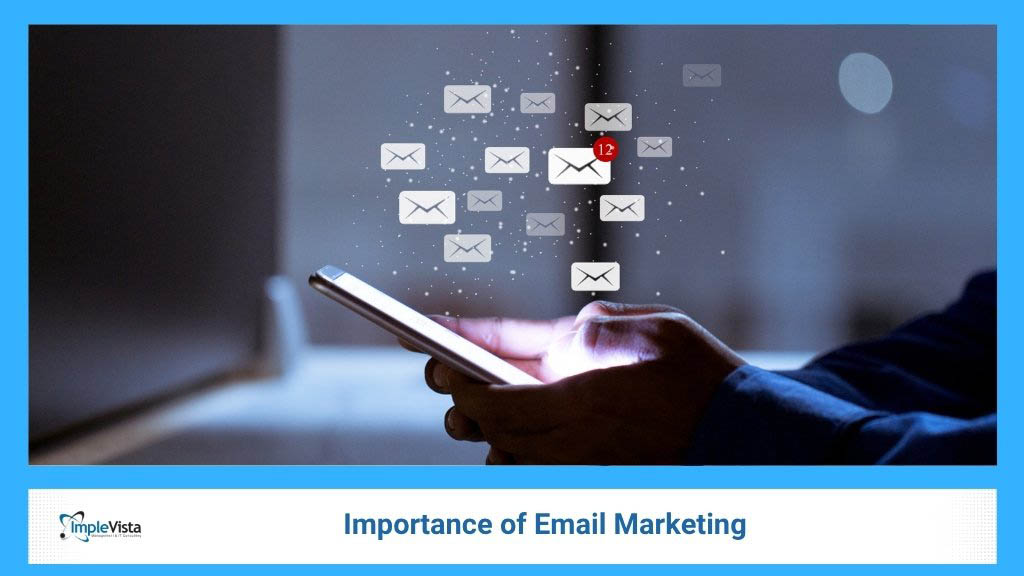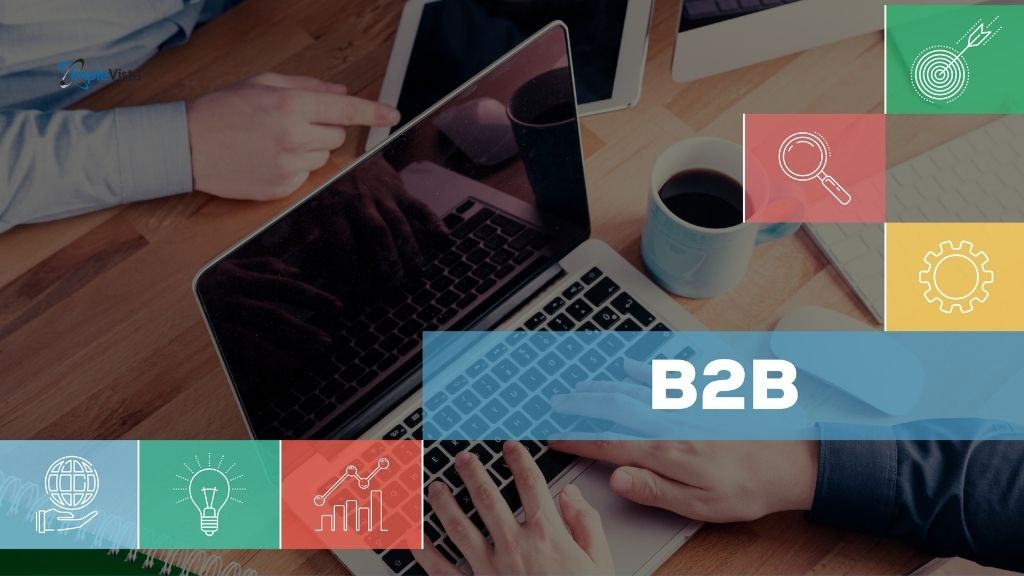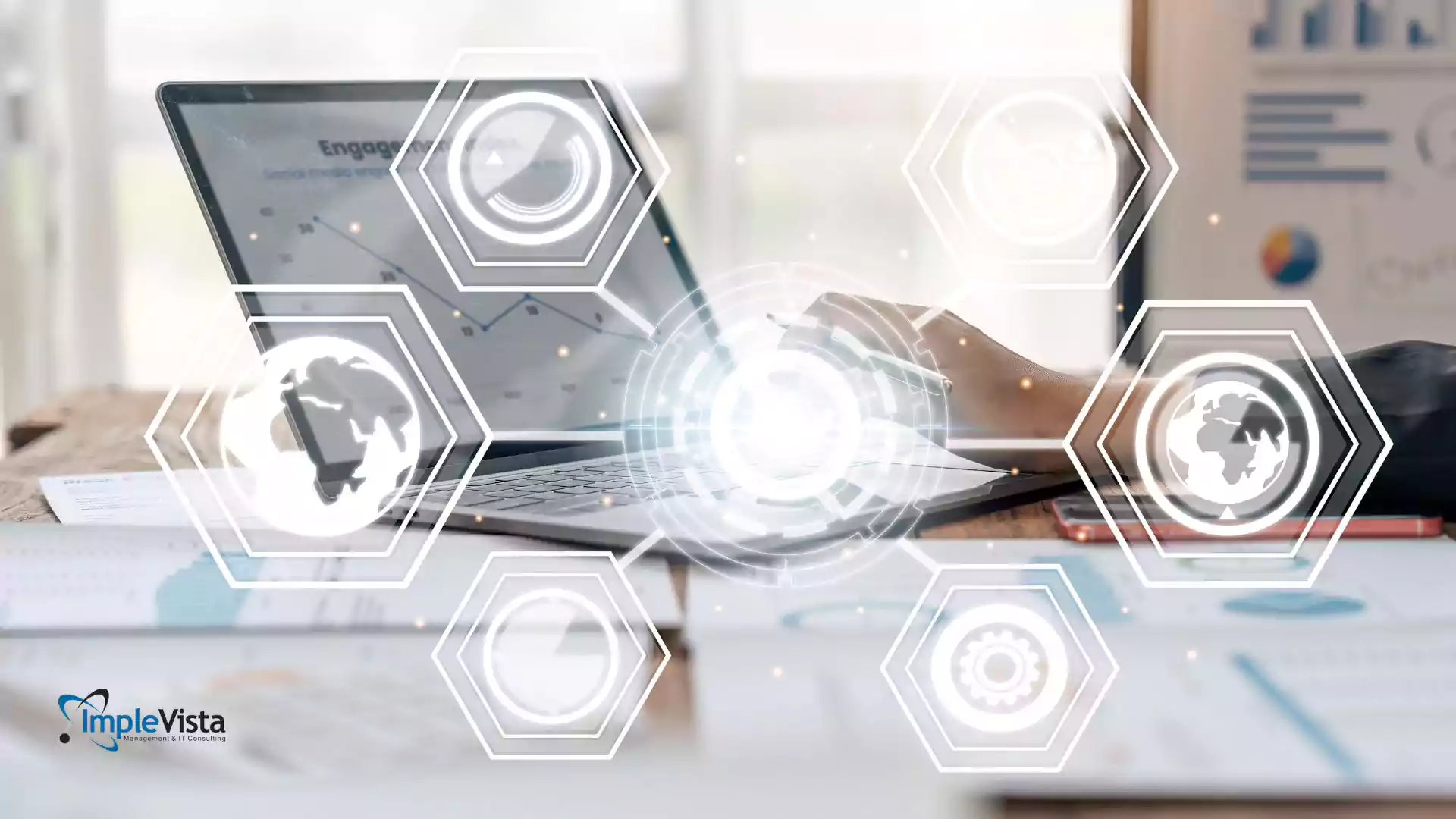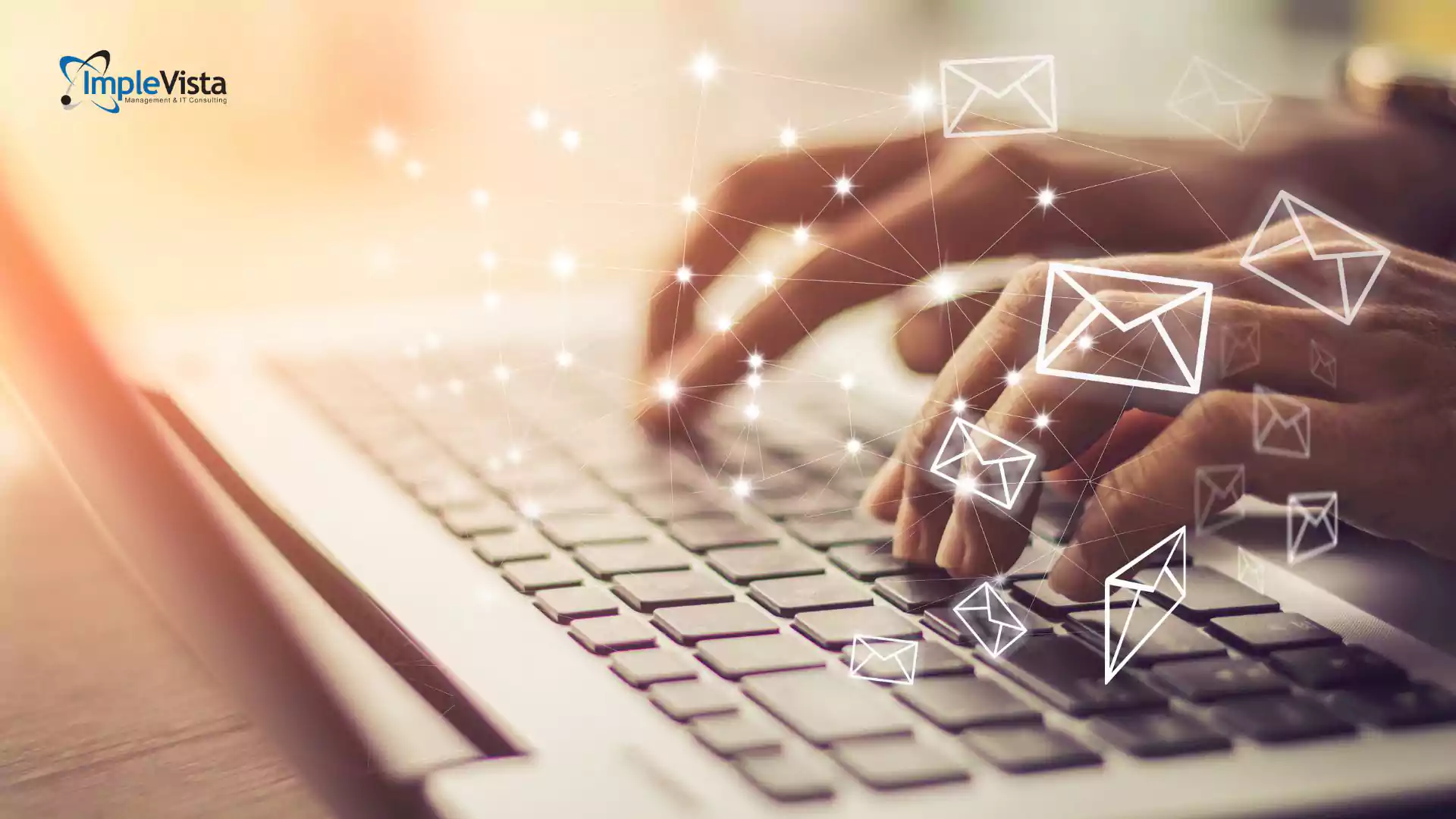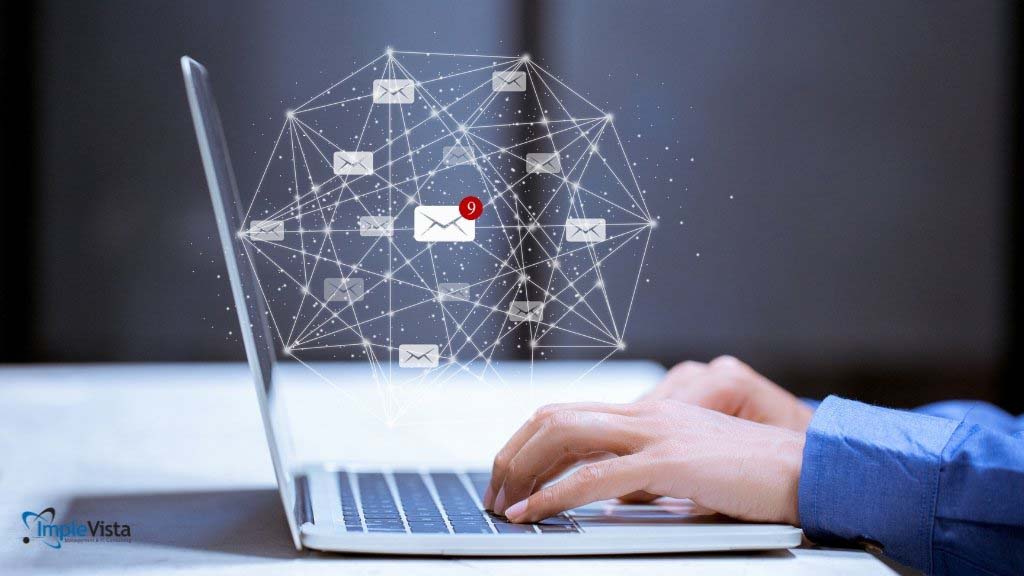Email marketing stands not merely as a communication channel but as the single most critical, owned asset in the contemporary digital marketing landscape. In an environment where businesses rent space on social platforms and compete fiercely for fleeting attention through paid channels, the direct connection offered by email represents a proprietary pathway to sustainable, scalable revenue growth.
This comprehensive report outlines the crucial importance of email marketing, detailing the financial justification, technical requirements, legal compliance mandate, and advanced strategic execution necessary for excellence in the 21st-century digital economy.
I. The Strategic Imperative: Justifying Email Marketing as the Core Revenue Engine
The modern digital strategy must prioritize channels that build long-term relationships and provide measurable, high-impact returns. Email marketing meets this standard definitively by enabling a direct line of communication that is both cost-effective and highly measurable.
1.1. Defining Email Marketing’s Unique Position in the Digital Stack
Email marketing is defined as a powerful digital channel utilized for sending electronic messages directly to prospects and customers. Unlike transient social media interactions, a consistent email marketing strategy allows brands to remain in contact with their consumers between purchases, fostering engagement and keeping the audience updated on brand happenings, products, and services.
This continuous interaction is essential for nurturing leads and guiding them systematically toward becoming high-value, paying customers. Effectiveness within this channel relies on several foundational pillars: setting clear goals (such as increasing sales or building brand awareness), establishing a subscriber list composed of interested recipients, selecting a robust Email Service Provider (ESP), and implementing automated workflows for efficiency.
By owning this channel, businesses gain control over the distribution, messaging, and data that they do not possess when relying solely on third-party platforms.
1.2. The Unmatched Return on Investment (ROI): Why Email Still Reigns Supreme
Email marketing’s reputation as a financial powerhouse is well-founded. A significant portion of the marketing community recognizes its superior profitability, with 14% of global marketers identifying email marketing as providing the best ROI in 2024. This performance places it strategically alongside other core activities, such as content marketing, paid social content (14% each), and websites, blogs, and SEO (16% each).
Analyzing the 4300% Average ROI and Benchmarks
The potential return on investment is not only high but highly polarized based on execution complexity. The average ROI for email marketing is substantial, but businesses that often or always create personalized emails see an astounding average ROI of 4300%. This success profile stands in stark contrast to brands that never or rarely include dynamic content in their campaigns, which see an average ROI of only 1200%.
The Dynamic Content Multiplier
This massive divergence in returns highlights a crucial point: high-performance email marketing is exclusively driven by advanced tactics, specifically the integration of dynamic content. The use of dynamic content for personalized email marketing campaigns raises the channel’s ROI by 258%.
For example, industries with high data utilization, such as Marketing, PR, and Advertising, often beat the average with an ROI of 4200%, while Software and Technology sectors are generally in line with high personalization averages at 3600%. This data clearly demonstrates that the era of simple, static email blasts is strategically obsolete; high returns are now contingent upon sophisticated data science and dynamic content delivery.
1.3. Beyond Immediate Sales: The True Value of a Subscriber (CLV)
While driving sales is a primary objective for many—48% of businesses use sales as a key metric for measuring success —the profound financial importance of email marketing is fully understood only when assessing long-term Customer Lifetime Value (CLV). Email marketing facilitates the continuous relationship needed to maximize this value.
Quantifying Subscriber Value
The strategic importance of list acquisition is underscored by tangible financial benchmarks. For instance, the average value of a customer email address in the UK is calculated at £36.64. For online vendors utilizing advanced systems, the average annual revenue generated per subscribed account in the US is $6.86. These figures move the metric of success beyond a single transaction to encompass the entire duration of the customer relationship.
CLV Calculation and Strategy
CLV modeling reveals the true economic engine of email. The lifetime value of an email subscriber is calculated by taking the profit generated by an average active subscriber in a year and multiplying it by the average lifetime of that email address within the database. This calculation shifts the focus from optimizing short-term conversion rates to optimizing retention, engagement, and the longevity of the email address itself.
1.4. Email as the Integration Hub: Synergies with CRM and Cross-Channel Strategy
In large organizations, email marketing cannot operate in a silo. Its financial and strategic success depends entirely on its integration with the broader business ecosystem, particularly Customer Relationship Management (CRM) systems.
Email tools that integrate seamlessly with CRM systems open the door to advanced functionality and essential scalability. As subscriber lists expand and campaign analytics accumulate, the ability to share performance data—such as open rates and click-through rates—across the entire organization becomes essential.
This unified data approach facilitates team collaboration, which is key to scaling email marketing campaigns to new heights and ensuring that insights inform product development, sales, and service delivery. The critical performance of email marketing (yielding up to 4300% ROI ) necessitates this centralized data environment, as personalization cannot be executed effectively without deep, cross-departmental access to customer history and preferences.
Why is email marketing more effective than social media or paid ads for ROI?
Email marketing is uniquely effective because it relies on owned data, not rented platform access. While channels like SEO and social media also offer strong returns (16% of marketers report them as best ROI ), the potential 4300% ROI of personalized email is achieved through two main factors: low cost-per-send and the highly valuable use of first-party data.
This data enables the deployment of hyper-relevant, timely content, such as triggered retention emails, which are proven to be 95% more likely to be opened than mass-sent emails. This ability to target and act instantly on intent results in significantly higher conversion rates within existing customer relationships, making the channel exceptionally profitable.
Email Marketing ROI Multipliers: The Impact of Personalization
| Personalization Level | Average ROI (%) | ROI Increase from Dynamic Content | Strategic Implication | |
| Never or Rarely Dynamic | 1200% | N/A | Static campaigns risk becoming spam; suboptimal use of channel potential. | |
| Often or Always Personalized | 4300% | 258% | Leveraging data to achieve competitive, industry-leading returns. |
II. Advanced Metrics and Performance Benchmarking
A mature email marketing operation shifts its focus away from simple metrics like open rates, which can be influenced by factors external to the campaign itself, toward conversion-centric KPIs. Understanding global and industry benchmarks is vital for contextualizing performance and identifying areas where strategic automation can drive superior results.
2.1. Core Performance Indicators (KPIs) for Email Success
Measuring the success of email campaigns is essential for making data-driven decisions. The primary focus must be on bottom-line outcomes, rather than vanity metrics.
The Conversion Focus
For best-in-class email marketers, the conversion rate is the critical primary KPI, utilized by 41% of top practitioners. The conversion rate represents the percentage of recipients who complete a desired action after clicking through, such as making a purchase or filling out a form.
While the overall conversion rate for all emails sent averages 1.06%, the crucial metric is the efficiency of the traffic generated: a healthy 15.22% of click-throughs from email campaigns convert. This high conversion efficiency demonstrates the quality of the traffic generated by permission-based, targeted communication.
Essential Hygiene Metrics
Beyond conversion, campaign measurement must track metrics that indicate the health and relevance of the list. These include the Bounce Rate, which is the percentage of messages that fail to deliver to recipients, and the Unsubscribe Rate, which signals whether content is relevant and valuable to the audience over time. Maintaining low bounce rates is directly tied to list hygiene and deliverability, which are the technical foundations of profitability.
2.2. Global and Industry Benchmarks (Contextualizing Performance)
To accurately assess campaign performance, it must be measured against established global and industry standards.
Global Average Baseline
The overall global average email open rate across all industries currently stands at 39.64%, accompanied by a low average bounce rate of 2.33%. However, performance exhibits dramatic geographic variation. Oceania leads in engagement with an open rate of 55.66%, followed by North America at 45.30%.
In contrast, performance in Asia lags significantly, reporting an average open rate of 28.04%. Marketers operating in multiple regions must tailor their expectations and strategies to these distinct performance baselines.
Industry Disparity
Performance benchmarks vary widely by sector, which must be aligned with the expected ROI for that industry. For example, high ROI sectors like Marketing, PR, and Advertising (4200% ROI) and Software and Technology (3600% ROI) must ensure their internal engagement rates surpass general industry averages to justify their premium returns.
Specific high-engagement sectors include Communications (65.14% open rate) and Legal Services (47.26% open rate), while Internet Marketing registers a comparatively lower open rate of 32.62%. Understanding these disparities is critical for realistic goal setting.
2.3. The Power of Automated Messaging: High-Impact Triggered Email Benchmarks
The difference between standard, manually created newsletters and automated, triggered communications is significant, and it highlights where investment should be prioritized.
Welcome Flow Supremacy
The highest engagement rates are consistently achieved by welcome emails, which register an average open rate of 83.63%. This figure reflects the high degree of intent and immediacy that exists when a new user has just subscribed. Strategically, this first communication is the most valuable opportunity to build trust, communicate brand value, and set expectations for future interactions.
Automated Performance vs. Manual Blasts
Automated communications inherently outperform mass-sent emails because they are highly contextual and timely. Autoresponder emails maintain a high open rate of 51.05%, and general triggered emails—those sent in response to a user’s action or inaction—achieve a 45.38% open rate. This significantly surpasses the average performance of standard newsletters, which clock in at 40.08%.
Furthermore, triggered emails demonstrate a distinct advantage in retention strategies: studies confirm these reminder and follow-up emails are 95% more likely to be opened and achieve twice the click-through rate of generalized mass emails.
This data confirms that resources dedicated to establishing advanced, automated sequences (such as abandoned cart recovery or re-engagement flows) will yield a higher engagement ROI and deliver superior customer lifetime value (CLV) compared to resources spent on manual, one-off campaign creation. Therefore, automation is not merely an efficiency tool; it is the core leverage point for maximizing strategic email performance.
Key Global Email Benchmarks by Message Type and Strategic Impact
| Message Type | Average Open Rate (%) | Average Bounce Rate (%) | Strategic Implication | |
| Welcome Emails | 83.63% | 3.98% | Critical first touchpoint; highest engagement, requires immediate value. | |
| Autoresponder | 51.05% | 2.53% | Highly reliable flow for nurturing and drip content. | |
| Triggered Emails | 45.38% | 2.38% | Essential for retention and capturing high-intent moments. | |
| Newsletter | 40.08% | 2.42% | Baseline content, requires continuous quality to maintain engagement. |
III. Segmentation, Personalization, and the AI Evolution
The shift from mass-market communication to individualized engagement is the primary driver of email’s exceptional ROI potential. Achieving this level of precision requires sophisticated segmentation techniques, fueled increasingly by artificial intelligence (AI).
3.1. Foundational Segmentation: Clean Data and Centralized Contact Management
Successful segmentation begins not with advanced technology but with data integrity. It is a mandatory starting point to establish clean, centralized contact data. Without accurate and unified data, even the most sophisticated targeting systems will fail.
The evolution of list management dictates that strategic marketers must move beyond static lists, which rapidly become outdated, and instead utilize dynamic tags and filters. This ensures that segmentation remains relevant and actionable in real-time, reflecting the subscriber’s current behavior and status.
The ability to segment dynamically based on fresh data is foundational to deploying timely, triggered campaigns that are proven to deliver superior engagement.
3.2. Strategic Segmentation: Building Segments by Behavior and Client Lifecycle
Effective segmentation must prioritize behavioral data over simple demographics. Targeting based solely on age or location is outdated; modern strategic segmentation must be built around subscriber actions, such as website visits, product interactions, and duration since the last purchase.
Furthermore, segments must align directly with the client lifecycle, from initial lead conversion through post-purchase activity to potential dormancy. This includes actively building segments designed to identify customers who are deemed to be “in limbo,” meaning they are failing to gain value from the product or service and are therefore at high risk of churning.
Advanced email service providers must be capable of capturing all user data (behaviors, preferences, and intent) and proprietary analytics (models, propensity scores, and predicted responses) to fuel dynamic, lifecycle-based queries.
3.3. AI-Powered Personalization and Dynamic Content Scaling
The operational complexity of achieving hyper-personalization for millions of subscribers can only be managed through the integration of artificial intelligence. AI is utilized to optimize email campaigns by automating critical, time-intensive tasks such as segmentation, personalization, content creation, and determining the optimal send times.
Identifying Granular Segments
AI excels at analyzing complex, historical data from CRM systems to automatically identify granular customer segments based on patterns that are often too subtle for human marketers to detect. This capability allows marketers to target specific groups with highly relevant messaging at an unprecedented scale.
The Next Best Action
By leveraging customer data—including historical purchases, interactions, and preferences—AI systems can tailor dynamic content, offers, and specific product recommendations. Critically, AI can then determine “the next best email” to send based on how the customer interacts with the preceding message, thus automating the continuation of a highly customized journey.
This type of content creation simultaneously streamlines the process of customization while scaling it across the entire customer base, potentially saving thousands of hours of manual work and resulting in surges in conversions and click-through rates.
The massive ROI potential of personalization (4300% ) is therefore contingent upon this technological evolution. AI integration is the economic mechanism that allows organizations to realize these high returns without incurring prohibitive operational costs, transforming personalization from a niche tactical effort into a core, scalable strategy.
3.4. Automation Workflows for Maximum Retention
Strategic automation workflows ensure timely engagement throughout the customer lifecycle, acting as the primary system for revenue protection and growth. Key automated sequences include:
- Welcome Sequences: These are vital for new subscribers, providing an immediate introduction to the brand and qualifying the lead.
- Recovery and Re-engagement: Abandoned cart messages are highly effective high-intent triggers. Likewise, re-engagement emails for dormant leads are essential to nudge them back into the sales funnel.
- Post-Purchase Value: Follow-up emails that include onboarding steps, usage tips, or product recommendations based on past purchases are crucial for retention. By clearly communicating product value and leveraging what is working for existing customers, these emails reduce the likelihood of churn.
IV. B2B vs. B2C: Architecting the Right Strategy
Treating Business-to-Business (B2B) email marketing identically to Business-to-Consumer (B2C) communication guarantees sub-optimal results. The differences in content, sales cycle, and metric measurement require two fundamentally distinct strategic approaches.
4.1. The Fundamental Difference in Customer Journey and Buying Psychology
The core divergence lies in the complexity of the buying journey.
B2B Complexity
In B2B scenarios, sales cycles are long and complex. Decisions involving enterprise software or significant service investments are rarely impulsive. The B2B customer journey involves multiple touchpoints, extensive research, and often requires committee consensus before a purchase is finalized.
Therefore, B2B email marketing must prioritize tactics aimed at capturing qualified leads, continuously providing answers throughout the lengthy sales funnel, and building long-term trust.
B2C Simplicity
The B2C customer journey is typically short, focusing on encouraging quick purchases driven by impulse or immediate need. B2C tactics emphasize capturing active consumers and providing efficient customer service solutions, often relying on emotional connection and visual stimulation to prompt rapid action.
4.2. Strategic Content and Design Divergence
The content and design of B2B and B2C emails must reflect these psychological differences.
B2B Mandate: Authority and Trust
B2B email content is characteristically formal, professional, and detailed. The primary function is to provide solutions to organizational pain points, supported by industry insights, research, and technical statistics. The design must be conservative and clean, focusing on building trust and demonstrating technical authority, which is necessary for navigating the high-stakes, longer B2B sales cycle.
B2C Mandate: Speed and Visual Engagement
B2C emails prioritize visual appeal. They utilize eye-catching graphics and imagery to attract customers and engage them as quickly as possible, often promoting immediate offers or sales. The content is shorter and focused on consumer desires and brand affinity. Given the shorter sales cycle, especially for e-commerce, B2C businesses can often increase sending frequency, sometimes sending emails daily to capitalize on sales without overwhelming the audience.
4.3. Tailoring Metrics: Measuring Lead Quality (B2B) vs. Immediate Conversion (B2C)
The metrics used to gauge success must be tailored to the corresponding sales cycle.
B2C Metric Focus
B2C marketing emphasizes metrics that reflect immediate action: Conversion Rates, Click-Through Rates (CTR), and direct sales volume. These metrics align with the impulse-driven nature of consumer purchases.
B2B Metric Focus
B2B marketing success cannot be accurately measured by immediate conversion alone. Success is measured over the longer term and includes metrics such as Lead Quality, overall Customer Lifetime Value (CLV), and holistic ROI across the extended sales cycle. Applying B2C metrics to B2B campaigns often leads to unrealistic expectations and misinterpretation of data, failing to acknowledge the necessity of relationship nurturing before a major enterprise decision is finalized.
The need to capture detailed, technical information in B2B requires a content strategy that protects professional reputation, whereas the B2C focus on velocity permits greater risk in content frequency to maximize short-term sales opportunities.
Strategic Comparison of B2B vs. B2C Email Marketing Paradigms
| Strategic Element | B2B (Business-to-Business) | B2C (Business-to-Consumer) | |
| Primary Goal | Lead qualification, long-term trust, complex sales. | Immediate sales, brand affinity, rapid purchase cycles. | |
| Sales Cycle | Long, multi-touchpoint, committee-based. | Quick, individual, impulse-driven. | |
| Content Focus | Formal, technical solutions, industry insights, data-rich. | Visually appealing, concise, lifestyle-oriented, emotional offers. | |
| Key Metrics | Lead Quality, CLV, ROI over time. | Conversion Rate, Click-Through Rate, Immediate Sales. |
V. The Technical Mandate: Deliverability and List Hygiene
Deliverability is the technical foundation upon which all email marketing ROI rests. A failure to adhere to mandatory technical standards, particularly regarding sender reputation and list hygiene, means that even the most perfectly personalized content may never reach the subscriber’s inbox.
5.1. Ensuring Sender Trust: Authentication Protocols and Reputation
The foundation of a reliable email infrastructure requires proper authentication of the sender domain and messages. This is achieved through mandatory protocols:
- SPF (Sender Policy Framework): Verifies the server sending the email is authorized.
- DKIM (DomainKeys Identified Mail): Provides an encrypted signature to confirm the message has not been altered in transit.
- DMARC (Domain-based Message Authentication, Reporting, and Conformance): Provides policy and reporting feedback on authentication failures.
Beyond initial setup, consistent sender reputation monitoring is crucial. Maintaining a consistent sending frequency and schedule further contributes to the domain being perceived as trustworthy by Internet Service Providers (ISPs), which directly translates to higher inbox placement and fewer spam filter hits.
5.2. List Acquisition Best Practices: The Requirement for Double Opt-In
List quality must be prioritized over volume. The best practice for list acquisition is the implementation of the double opt-in mechanism. Double opt-in requires users to verify their email address after initial signup. This crucial step ensures that only genuinely interested users subscribe, validating the authenticity of the address and filtering out incorrect or fake signups.
This practice significantly reduces bounce rates and, most importantly, improves the sender’s reputation, which ISPs rely on to determine trustworthiness. Furthermore, businesses must adhere strictly to the principle of never using purchased email lists, as these inevitably lead to high bounce rates and immediate reputation damage.
5.3. Maintaining List Health: Hygiene, Suppression, and Sunset Policies
A list naturally degrades over time, making periodic cleaning and maintenance essential for sustaining high deliverability and maximizing the profitability of the existing list. The process of list hygiene involves three critical pillars:
- Remove Invalid and Bounced Emails: Hard-bounced email addresses, which signal a permanent delivery failure, must be identified and deleted regularly.
- Maintain a Suppression List: This list includes users who have actively unsubscribed, as well as those who have become chronically inactive. Sending to these addresses wastes resources and damages the sender’s reputation.
- Implement a Sunset Policy: Define clear criteria to phase out users who have stopped engaging with emails (e.g., non-openers for six to twelve months). Removing inactive recipients ensures the list remains engaged and relevant, preventing the domain reputation from being diluted by low engagement rates.
Technical compliance is the necessary gatekeeper for financial success. Poor list hygiene and low engagement rates reduce sender reputation, increasing the likelihood that emails will land in the spam folder, thereby preventing even the highly personalized, high-ROI content (up to 4300% ) from ever reaching its intended audience. Every unremoved hard bounce or inactive user actively jeopardizes the profitability of all future campaigns.
How often should I clean my email list to maintain high deliverability?
List cleaning should not be a sporadic task but a continuous, automated process integrated into the ESP workflow. Hard-bounced emails should be removed instantly and permanently. For inactive users, it is necessary to implement a “sunset policy” that defines criteria to phase out subscribers after a specific period (typically six to twelve months) of sustained non-engagement.
Regular, proactive cleaning is critical for maintaining a stable sender reputation and ensuring that ISPs perceive the sending domain as trustworthy, thereby protecting deliverability.
VI. Legal Compliance in a Globalized Market
As businesses increasingly operate across international borders, mastering the intricacies of global anti-spam and data privacy legislation is mandatory, not optional. Compliance minimizes legal risk, protects sender reputation, and builds fundamental customer trust.
6.1. Adhering to the CAN-SPAM Act (US Regulations)
The Controlling the Assault of Non-Solicited Pornography And Marketing (CAN-SPAM) Act sets the rules for commercial emails within the United States. Core requirements include:
- Accurate Identity and Disclosure: Messages must feature only original and accurate header information, including the originating domain name and email address. Deceptive subject lines are prohibited.
- Advertisement Identification: The message must be clearly identified as an advertisement or promotional email.
- Physical Address: The company’s valid physical postal address must be included in all commercial messages.
- Opt-Out Requirements: A clear and simple opt-out mechanism must be provided. Businesses have ten business days to honor a recipient’s request to stop receiving future marketing emails.
6.2. Navigating the GDPR (EU Regulations)
The General Data Protection Regulation (GDPR) governs data protection and privacy for all individuals within the European Union (EU) and European Economic Area (EEA), dramatically raising the bar for explicit consent. Key obligations include:
- Explicit Consent: Businesses must obtain clear, explicit, and informed consent from individuals before processing their data. Pre-ticked boxes or implied consent are not legally sufficient.
- Data Rights: GDPR grants individuals specific rights over their personal data, including the right to access, rectify, and the critical Right to Erasure (deleting their data from the company’s database). Businesses must fulfill these requests promptly.
- Breach Notification: Companies must notify users about any data breaches within 72 hours and take all possible measures to minimize the impact.
- Data Transfer: Transferring personal data outside the EEA is restricted unless the receiving country or organization offers adequate protection for consumer data.
6.3. Overview of CASL and Global Legal Trends
Canada’s Anti-Spam Legislation (CASL) enforces similar strict regulations. Every commercial electronic message (CEM) sent must clearly identify the sender and must contain a functioning unsubscribe mechanism, which must be enacted within ten days of the request. CASL is notable for its steep penalties, with businesses facing fines as high as $10 million for violations.
This global trend toward strict regulation means that legal compliance is transforming from a risk mitigation strategy into a fundamental quality filter. The requirement for informed, explicit consent (as mandated by GDPR) forces marketers to acquire high-quality, engaged subscribers from the outset. This adherence to legal standards minimizes spam complaints, maximizes engagement, and builds deep customer trust, which is the necessary bedrock for successful CLV maximization.
6.4. Responsibility and Third-Party Monitoring
Compliance liability extends beyond the sender’s immediate actions. Businesses are responsible for the compliance of third-party marketing tools used on their behalf, including Email Service Providers (ESPs). The law mandates that businesses monitor their partners and ensure they also play fair and adhere to all relevant regulations.
VII. Content Architecture and Technical SEO Standards (The Content Playbook)
For a resource of this depth to achieve maximum visibility and demonstrate topical authority, its structure and technical optimization must adhere to stringent SEO standards, serving both the user and the search engine algorithms.
7.1. Structuring the Long-Form Article for Topical Authority
To signal to search engines that this report is the definitive resource on the topic, an exhaustive depth (as demonstrated by the comprehensive outline) is required.The structure must employ a strict H-tag hierarchy: H1 for the main topic, H2 for major sections (like “The Strategic Imperative”), and H3 for detailed sub-topics, statistical analysis, and People Also Ask (PAA) answers. This hierarchy promotes clear organization and accessibility for advanced readers.
7.2. Advanced Keyword Mapping and Semantic Integration
The content must strategically integrate high-intent technical terminology (e.g., DMARC, behavioral segmentation, CLV modeling, AI personalization) naturally throughout the text. This ensures the article ranks not just for broad commercial terms but also captures high-value, strategic search traffic from users with deep professional needs.
7.3. Internal Linking Strategy
To establish topical authority and spread link equity across the digital ecosystem, strategic internal linking is essential. Key technical terms and broader strategic concepts (such as “Digital Marketing Strategies” and “SEO Guidelines for Website Development” ) must be linked back to core service pages. This not only aids user navigation but also guides users toward specific conversion funnels.
7.4. Optimizing Metadata, H-Tags, and Featured Snippets
Maximizing visibility in search results requires precise optimization. PAA answers must be specifically structured using or H3 headings followed by concise, informative answers using natural language, backed by credible sources. This structure directly targets Featured Snippets, which are powerful gateways to visibility and long-tail traffic, and whose importance will only grow with the rise of conversational and AI-driven queries.
Furthermore, title tags and meta descriptions must be crafted to include the core keyword and promise the high-value, data-driven content contained within (e.g., referencing the 4300% ROI potential).
7.5. Multimedia and Visual Integration
Visual elements are vital for reader engagement and retention, translating directly to positive SEO signals. The integration of data tables, such as the benchmarks detailing ROI multipliers and automation performance, serves as a non-negotiable visual anchor.
Furthermore, integrating multimedia assets like video should be considered a best practice for content distribution, as emails containing video links—such as those linked to YouTube (44.66% open rate) or Vimeo (51.63% open rate)—demonstrate significantly higher engagement rates. Emails containing graphics generally have a higher open rate (43.12%) than those without (35.79%), emphasizing the importance of visual quality across all communication.
VIII. The Future of Email Marketing and Actionable Recommendations
8.1. The Synthesis: Email Marketing as a Data-Driven Ecosystem
The evidence comprehensively demonstrates that email marketing remains the most financially potent channel in the digital ecosystem, provided it is executed with technical precision and strategic depth. The potential average ROI of 4300% is not a guarantee but a function of the convergence of data hygiene, adherence to global regulatory compliance, and the implementation of AI-powered personalization systems.
The success of modern email is fundamentally determined by technical diligence and the ability to automate the customer journey based on behavioral data (45–83% engagement rates for triggered emails ). The era of basic email marketing is over; contemporary excellence demands a sophisticated, integrated, data-driven strategy.
8.2. Actionable Plan for Strategic Excellence
For organizations aiming to capitalize on the profound returns offered by this channel, the following three pillars represent the necessary action plan:
Mandate Data Purity and Deliverability: The integrity of the email list is the technical foundation of all revenue. Organizations must immediately audit all acquisition methods, move to a mandatory double opt-in system, and implement mandatory authentication protocols (SPF, DKIM, DMARC). This secures a trustworthy sender reputation, which is the precondition for achieving high inbox placement and maximizing profitability.
Invest in Predictive Intelligence: The gap between personalized (4300% ROI) and non-personalized (1200% ROI) content is too wide to ignore. Strategic investment must prioritize AI integration with CRM data to unlock scalable, behavioral segmentation and predictive content generation. This enables a shift from static blasts to dynamic content tailored to the “next best action” for each customer.
Optimize for Retention and CLV: Since long-term profitability hinges on Customer Lifetime Value (CLV), focus must shift from manual campaign creation to systematic automation. All critical client lifecycle journeys—including welcome sequences (83.63% OR), onboarding, abandoned cart recovery, and re-engagement flows—must be mapped and automated to systematically boost engagement, reduce churn, and ensure long-term profitability.
IX. Frequently Asked Questions (FAQ)
9.1. What is Email Marketing?
Email marketing is a powerful digital marketing channel used to send direct electronic messages to prospects and customers, fostering Customer Engagement and driving business growth through tailored communication.
9.2. What is the average ROI for Email Marketing?
The average ROI for Email Marketing is substantial, but businesses that utilize dynamic, personalized content often achieve an astounding average Return on Investment of 4300%.
9.3. How do I measure the success of my email campaigns?
Key metrics include the Conversion Rate (the primary KPI for best-in-class marketers), Click-Through Rate (CTR), Open Rate, and Unsubscribe Rate, all of which measure the success and health of your campaigns.
9.4. How does AI improve Email Marketing performance?
AI optimizes campaigns by automating complex tasks like segmentation, personalization, dynamic content creation, and determining the optimal send times to improve conversion rates and scale efficiency.
9.5. How often should a business send marketing emails?
Sending frequency depends on the industry. E-commerce often sends daily emails (especially during sales), while service-based businesses typically send once a week to once a month to prevent overwhelming the audience and maintain list health.
9.6. What is a good average open rate for email campaigns?
The overall global average email open rate across all industries is approximately 39.64%. However, automated and highly relevant messages, such as Welcome Emails, achieve a much higher average rate of 83.63%.
9.7. Why is list hygiene important for email marketing?
List hygiene is critical for improving your sender reputation and increasing deliverability. Regularly identifying and removing invalid or hard-bounced email addresses significantly enhances overall deliverability and protects your domain authority.
9.8. What is the difference between B2B and B2C Email Marketing?
B2B focuses on nurturing long-term relationships and lead qualification over complex sales cycles. B2C emphasizes rapid purchases, immediate conversion, and visually appealing, shorter content aimed at impulse decisions.
9.9. What is Customer Lifetime Value (CLV) in Email Marketing?
CLV is a long-term ROI metric calculated by multiplying the average annual profit generated by an active subscriber by the average lifetime of that email address in the database, revealing the true economic worth of a subscriber.
9.10. What is the double opt-in mechanism?
Double opt-in requires new subscribers to verify their email address after initial signup. This confirms authenticity, reduces bounce rates, and significantly improves the sender’s reputation and deliverability by ensuring only interested users are on the list.
The difference between basic communication and strategic revenue generation in email marketing is technical maturity. Secure the strategic advantage and unlock the documented 4300% ROI potential. Contact Implevista today for a comprehensive Email Marketing Strategy and Deliverability Audit.

